
Margaret of Denmark was Queen of Scotland from 1469 to 1486 by marriage to King James III. She was the daughter of Christian I, King of Denmark, Norway and Sweden, and Dorothea of Brandenburg.

Dalkeith is a town in Midlothian, Scotland, on the River Esk. It was granted a burgh of barony in 1401 and a burgh of regality in 1540. The settlement of Dalkeith grew southwestwards from its 12th-century castle . Dalkeith has a population of 12,342 people according to the 2011 census.

John Kay was a Scottish caricaturist and engraver.
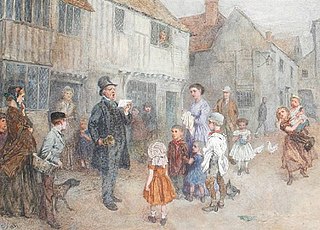
A town crier, also called a bellman, is an officer of a royal court or public authority who makes public pronouncements as required.
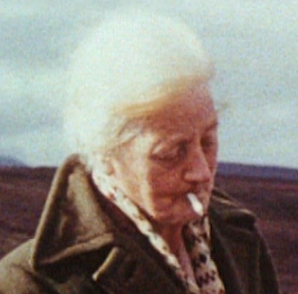
Margaret Caroline Tait was a Scottish medical doctor, filmmaker and poet.

The Tron Kirk is a former principal parish church in Edinburgh, Scotland. It is a well-known landmark on the Royal Mile. It was built in the 17th century and closed as a church in 1952. Having stood empty for over fifty years, it was used as a tourist information centre for several years in the mid 2000s and, more recently, was the site of the Edinburgh World Heritage Exhibition and John Kay’s book and gift shop.
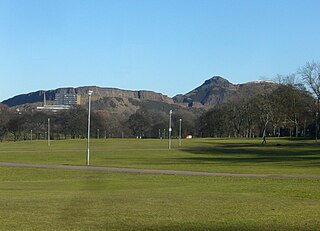
The Burgh Muir is the historic term for an extensive area of land lying to the south of Edinburgh city centre, upon which much of the southern part of the city now stands following its gradual spread and more especially its rapid expansion in the late 18th and 19th centuries. The name has been retained today in the partly anglicised form Boroughmuir for a much smaller district within Bruntsfield, vaguely defined by the presence of Boroughmuir High School, and, until 2010, Boroughmuirhead post office in its north-west corner.
Events from the year 1773 in Great Britain.

The 1899 Home Nations Championship was the seventeenth series of the rugby union Home Nations Championship. Six matches were played between 5 January and 18 March. It was contested by England, Ireland, Scotland and Wales.
Lady Jean Stewart, was an illegitimate daughter of King James V of Scotland by his mistress, Elizabeth Bethune.

Beggars' badges were badges and other identifying insignia worn by beggars beginning in the early fifteenth century in Great Britain and Ireland. They served two purposes; to identify individual beggars, and to allow beggars to move freely from place to place.

Thomas Elder of Forneth, was a Scottish wine merchant who served as Lord Provost of Edinburgh from 1788 to 1790.
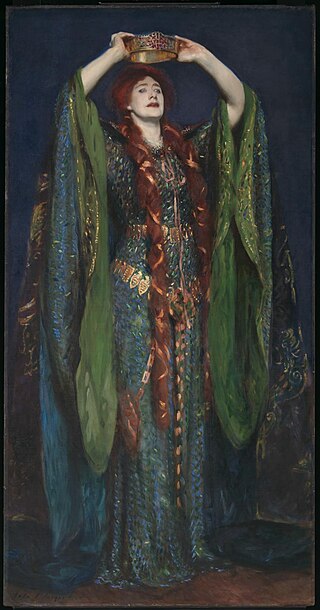
Ellen Terry as Lady Macbeth is an oil painting by John Singer Sargent, now in Tate Britain, in London. Painted in 1889, it depicts actress Ellen Terry in a famous performance as Lady Macbeth in William Shakespeare's tragedy Macbeth, wearing a green dress decorated with iridescent beetle wings. The play was produced by Henry Irving at the Lyceum Theatre, London, with Irving also playing Macbeth opposite Terry. Sargent attended the opening night on 29 December 1888 and was inspired to paint Terry's portrait almost immediately.
David Paton was a Scottish artist active between 1660–1700.
Henry Grieve FRSE was a Scottish minister who served as Moderator of the General Assembly of the Church of Scotland in 1783. He was a co-founder of the Royal Society of Edinburgh in the same year. He was also one of the Deans in the Chapel Royal in Edinburgh and Chaplain in Ordinary to King George IV.

Sibilla "Sibbie" Hutton was a Scottish milliner and shopkeeper in 18th century Edinburgh. She became well known for operating a millinery in what today is Edinburgh City Chambers. She was a target of caricature for her fashion sense and "stout"ness.

William Paul was a minister of the Church of Scotland who was patriarch to a number of eminent Scottish ministers. He was Chaplain in Ordinary to King George III.

Thomas Randall Davidson (1747–1827) was a Church of Scotland minister and landowner.
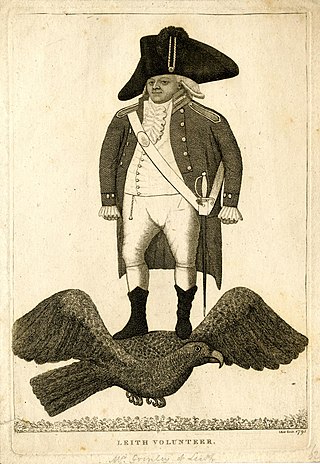
William 'Spread Eagle' Grinly[a] was a British soldier, merchant, and mariner during the 18th and 19th centuries, known for his often distinctive dress and flamboyant character.
Thomas Alison (1860–1931) was a Scottish painter whose main period of activity was 1880–1914. Principally known for Landscape painting, he also produced portraits and other works. He lived in Dalkeith, Midlothian, and also worked in Spain.















